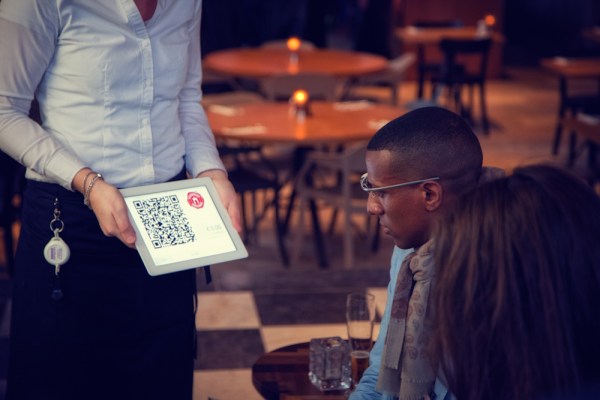While Google may be working on adding Google Wallet to Glass, and other big payment players are “eyeing up” (!) ways of integrating into Google’s computing headgear, a Dutch startup has beaten them to the punch.
Eaze is a new app, out in beta today, that uses voice and image recognition to activate the service, and nodding head gestures to confirm and complete payments. Eaze claims to be the first global payment solution to make its way to Glass, after first announcing its plans back in February of this year.
Starting with bitcoin and integrating with existing bitcoin wallets Coinbase and Blockchain.info, the plan is to add fiat currencies like dollars and euros, and corresponding wallets that hold them, this summer.
“We are in talks with wallets that handle FIAT currencies,” co-founder Raimo van der Klein told me in an interview. “It all depends a bit on the right API’s. But we expect this summer to add the first.”
Among those that Eaze may work with in future is PayPal. The eBay-owned company has been working hard at setting the pace for where payments will go next. That strategy includes wearables, as evidenced by the PayPal integration with the Samsung Gear watch earlier this year. “We are also in talks with them,” says co-founder Rutger van Zuidam.
Van Zuidam says that Eaze picked bitcoin first because it was “the most easy currency to implement, and the main story is about making payments frictionless.”
It’s not only large companies like PayPal and Intuit that have been touting the potential of Glass for payments. Other startups have been making moves in the same direction.
Glass Pay from RedBottle Design is one solution that has picked up some attention. It projects that its app will not be out until later this year, however.
Zapier, which links up different apps to work together with triggers and actions, is also in the process of building tech for PayPal to work with Google Glass. But again, this is not a payment app in itself (yet).
Eaze works like this: After a user downloads the Glassware on their device, he/she goes through a process to activate it and then link up an existing bitcoin wallet to Eaze. A merchant that accepts bitcoin generates a code for the transaction (using Bitpay or another bitcoin POS provider. “They are all the same,” says Van der Klein.), and then presents that code to the user. The user says, “OK Glass, make a payment,” and Glass then scans the code. The details appear on Glass’ display and a user nods twice to complete the transaction.
Eaze’s founders — Van der Klein is a Nokia alum who was the co-founder of early augmented reality startup Layar; Van Zuidam is a repeat e-commerce entrepreneur — acknowledge that although their solution, once on Glass, is pretty easy to use, getting it there is quite cumbersome. (The process to activate it is significantly more painful than a simple app installation.) That’s mainly because there is no Glass Appstore in effect yet, and so app distribution is simply not user-friendly at this point. (Something we may see solved at Google I/O with the launch of a Glass App Store?)
Some of that inconvenience factor will not be unfamiliar to early adopters of mobile payments.
Although there are a number of companies out there with apps and integrations to help consumers use their phones to pay for goods and services, and some of them are quite cool, at the end of the day, nothing has really proven to be absolutely essential — or significantly more convenient than pulling out a plastic payment card — to become ubiquitous.
It’s telling, in fact, that some of the most well-known “mobile payment” services from companies like PayPal, Square and iZettle are based around the idea of turning mobile handsets into card readers — two steps forward, yes, but also a step back.
In that regard, making payments using Glass brings up some interesting possibilities.
Based around gesture and voice, it has the potential to remove physicality from the point of transaction altogether — making it actually more like an alternative to pulling out a physical wallet than a smartphone has proven to be.
It also potentially makes it a lot easier to spend money. And as a regular companion on your daily adventures, Glass really makes the concept of impulse buying more of a reality.
You can decide for yourself whether these last two points are actually good or bad things.
In any case, just as payment players are moving out into different kinds of hardware, so is Eaze. “We started with with Glass but we’re definitely looking into smart watches and other wearables, as well as connecting iBeacon technology,” says Van der Klein.
A video of how Eaze works is below:
